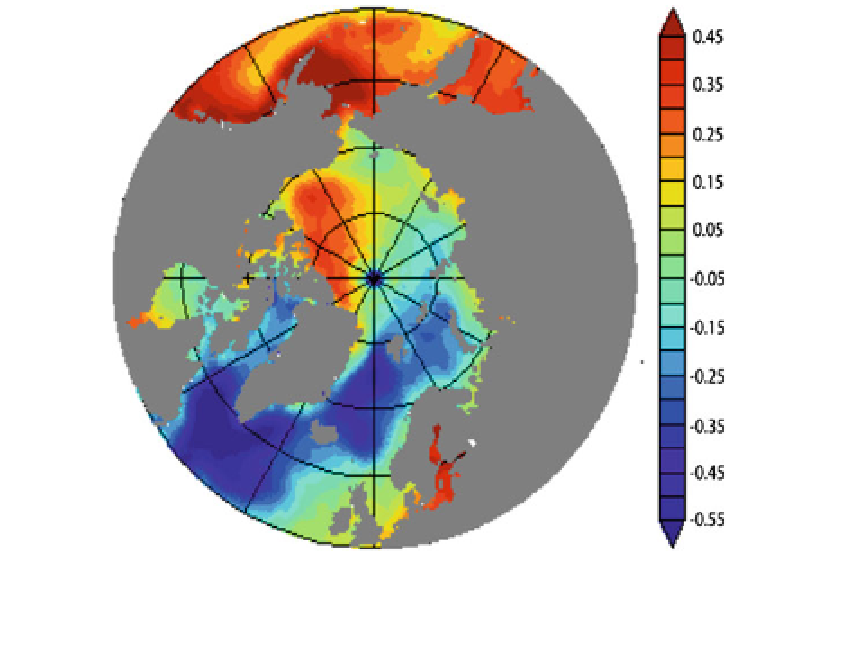Geoscience Reference
In-Depth Information
Fig. 3 Mean dynamic topography (MDT) derived from the GOCE gradiometer data (release 3) and
altimetry (from 1993 to 2009) with a spatial resolution of about 100 km. Color bar is in units of meter. The
structures in the North Pacific are not investigated further in this paper. Note that the GOCE data (release 4)
available since March 2013 are more accurate due to more than a doubling in the amount of data
the water masses from the GOCE-based MDT, an estimate of the barotropic contribution to
the MDT is derived as shown in Fig.
5
c. The barotropic contribution contains distinct
elevation changes of about 10 cm having pattern consistent with the known barotropic
cyclonic circulations in the Greenland Sea, the Lofoten Basin and in the Norwegian Sea
(Nøst and Isachsen
2003
). Evidence of this cyclonic barotropic circulation in the Nor-
wegian Sea has also been observed from Argo floats in the intermediate waters below the
Norwegian Atlantic Current (Søiland et al.
2008
). In summary, the assessment of the
GOCE-derived MDT for the Nordic Seas and the Arctic Ocean is promising.
In view of the promising GOCE-based results presented above, they are also providing a
new opportunity for inter-comparison and validation of coupled sea ice-ocean models and
reanalyses fields. As specified in Table
1
, the three models used in this inter-comparison
study include the regional setup of the ATL (MITgcm) model (Serra et al.
2010
); the
MICOM model (Sandø et al.
2012
); and the HYCOM model (Bleck
2002
; Sakov et al.
2012
). The models are either forced by the 6 hourly NCEP reanalysis field (ATL and
MICOM) or the ERA Interim field (HYCOM).
Ignoring the offset in the mean MDT, the three coupled sea ice-ocean models in general
reproduce comparable overall spatial structure of the MDT in the Arctic Ocean, the Nordic Seas
and the North Atlantic, notably the high in the Beaufort Gyre and the depressions in the Nordic
Seas and the subpolar gyre (Fig.
6
). The model highs in the Beaufort Gyre are circular and
located toward the deep Canadian Basin with decreasing values toward the Eurasian Basin,
providing an elevation difference of 0.5-0.6 m. The MICOM-field, however, has a gyre that
extends into the Eurasian Basin. In comparison, the GOCE-based elevated feature in the
Beaufort Sea is shifted more toward the Canadian Archipelago, while the total elevation

